My daughter, age 5 ½, is currently using phonetic readers. Because I like to try different things to see which works best, I’ve ended up purchasing quite a few different sets for her in addition to the ones I already had.
The nice thing about most phonetic readers is that they follow the Pink, Blue, and Green Series pretty closely. Most begin with 3-letter, short vowel words (Pink Series). They usually progress to short vowel words with consonant blends (Blue Series), and then lead to “phonemes”, which are all the other letter combinations that make sounds in English (Green Series).
Even though most phonics readers have many of the same elements (cute pictures, fun stories, words that become steadily more challenging), there are also many differences too. Some books do a better job than others at leading kids down the path of reading.
I’m going to take a look at a few different phonetic readers in this post. I had fun putting this together! (Note: I’m not going to link to specific websites; if you’re interested in any of the books mentioned, Google their names and you’ll find them available at many places, sometimes used but in good condition, including Amazon, Barnes & Noble, and eBay).
Sound Out the Word Phonics Readers from Scholastic – I bought Sets 1 & 2 of these after seeing that they were “based on recent research on how children learn to read”. Each set comes with an audio CD featuring all the sounds used in each story.
The child listens to a phonetic sound on the CD, and then says the sound while looking at the letters. Each book also shows a picture of what your mouth looks like when saying the sound, so the child can imitate it.
The books themselves feature cute, easy-to-read stories that progress very systematically. The first set is mostly short-vowel words, and the second set moves into blends.
I would highly recommend these books for a child who was needs some additional help with hearing, learning, and understanding sounds. A child could use a mirror and use the pictures of what your mouth should look like as a guide when making sounds.
My son had some difficulty forming certain sounds early on, and we used these sets quite successfully. I like that they combine hearing and seeing the sound. These books would be a nice companion to speech therapy.
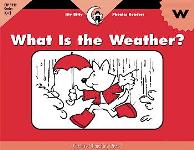 Itty Bitty Phonics Readers from Creative Teaching Press – Most teacher stores have a carousel display featuring these cute books. They are written by a teacher with over 20 years of experience. Each book focuses on just one phonetic sound. The drawings are very simple but cute.
Itty Bitty Phonics Readers from Creative Teaching Press – Most teacher stores have a carousel display featuring these cute books. They are written by a teacher with over 20 years of experience. Each book focuses on just one phonetic sound. The drawings are very simple but cute.
I have used these with my daughter and we do like them. I sometimes feel that the stories are too simple, and that too many of the words on the pages are phrases, not whole sentences.
Also the focus is more on a specific sound (say, “short a”) than word difficulty, which means you might find a longer “short a” word in the “short a” book that is too difficult for the child to read. While sight words have their place too, it can break the rhythm of the story to come across a word like that.
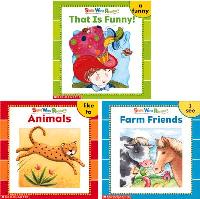 Sight Word Readers from Scholastic – These books are exactly as described: they teach sight words rather than phonetic words. I like them because they introduce only 1-2 sight words per book, making them ideal for new readers. The stories are short and fun, and the pictures are engaging.
Sight Word Readers from Scholastic – These books are exactly as described: they teach sight words rather than phonetic words. I like them because they introduce only 1-2 sight words per book, making them ideal for new readers. The stories are short and fun, and the pictures are engaging.
They also include little flashcards at the back of each book that can be used to review the sight words or for a matching game. Rather than using these books alone, I think they would be a nice companion to a set of true phonetic readers.
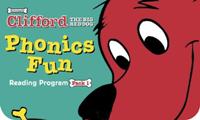 “Character” Readers from Scholastic – The title of these books isn’t actually “character readers”, so don’t search for it! I’m referring to all the beginning readers from Scholastic that feature children’s favorite characters: Dora the Explorer, Clifford the Big Red Dog, the Backyardigans, and so forth.
“Character” Readers from Scholastic – The title of these books isn’t actually “character readers”, so don’t search for it! I’m referring to all the beginning readers from Scholastic that feature children’s favorite characters: Dora the Explorer, Clifford the Big Red Dog, the Backyardigans, and so forth.
Books like these are usually fun, although the story quality is not necessarily high. I would recommend them for a reluctant reader who has an interest in the particular character featured. Giving them books with their favorite character may inspire them to read.
However, using them does promote the character in question, which seems commercial in nature. Unless you inherit these from someone else, I’d go for a different type of phonics reader.
BOB books – these books are considered classics in the field of phonics and reading, and have established the standard for beginning readers that includes simple drawings, engaging stories, and easy-to-read text.
I find that the stories appeal more to some children than to others (my son liked them more than my daughter), but they are certainly a good choice for any child who is learning to read. I do feel that Set 1 is the best of the BOB books; after that, the story quality declines somewhat and the characters are not as appealing.
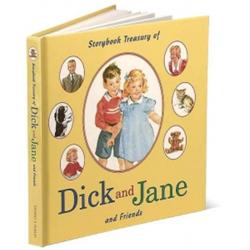 Dick & Jane – I’m including Dick & Jane books here even though they are generally more about sight words than phonics. Written in the 1930s, they were used in schools to teach reading up until the 1970s. They rely heavily on repetition, but there is also a progression of phonetic words used as well.
Dick & Jane – I’m including Dick & Jane books here even though they are generally more about sight words than phonics. Written in the 1930s, they were used in schools to teach reading up until the 1970s. They rely heavily on repetition, but there is also a progression of phonetic words used as well.
These books have been re-issued in newer editions in recent years, and someone happened to give me a few of them so I used them with both of my kids. I found that my daughter, especially, adores the drawings which are really quite cute.
Far more of the story takes place through the drawings than the text; for instance, one picture may show Jane falling down the stairs while the text says “Oh, Jane! Oh, Jane!”. The text (while applicable) is not actually describing what happens in the pictures, which I think makes for strange reading sometimes.
If you do use them, which I think is perfectly fine, they should be in addition to a phonics-based series and not in place of it.
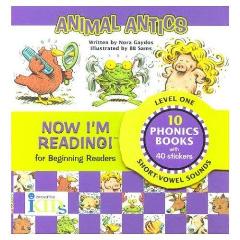 Now I’m Reading! by Nora Gaydos – I kept seeing this series at Barnes and Noble and was a bit turned off by the wild colors and designs on the covers of the books. It seemed distracting. But one day I picked up a set and quickly realized that they are quite well done.
Now I’m Reading! by Nora Gaydos – I kept seeing this series at Barnes and Noble and was a bit turned off by the wild colors and designs on the covers of the books. It seemed distracting. But one day I picked up a set and quickly realized that they are quite well done.
More than any of the sets I’ve mentioned so far, the author does a fantastic job of writing a coherent story using a limited selection of words. The stories and pictures are quite entertaining, and the vocabulary progression is excellent. (I should mention that set two includes both blends and long vowel sounds, but it’s done in a way that makes sense.)
Miss Rhonda’s Readers I only found out about these recently but I love them. They are phonetic readers by a Montessori-certified teacher that fit the Pink and Blue Series. Besides the interesting stories, these stand out to me because of the adorable drawings.
They are also available on the Amazon Kindle at $.99 each – I downloaded all 20 and my daughter has really enjoyed reading them on the Kindle (it adds a little excitement to reading time). Click “Read-a-Book” on their website and you can read the first book in the series online for free. Enjoy!

